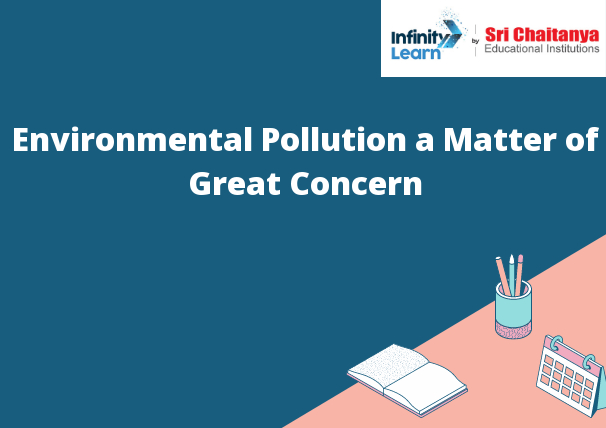Table of Contents
Introduction to Environmental Pollution a Matter of Great Concern ; Environmental Pollution ; Sources of Environmental Pollution ;
Effects of Environmental Pollution
Environmental pollution is a matter of great concern due to its adverse effects on the environment and human health. Environmental pollution is the release of pollutants into the environment that can cause adverse effects on the environment and human health.
Sources of environmental pollution include air pollution, water pollution, and land pollution. Air pollution is the release of pollutants into the air that can cause adverse effects on the environment and human health. Water pollution is the release of pollutants into water bodies that can cause adverse effects on the environment and human health. Land pollution is the release of pollutants into the soil that can cause adverse effects on the environment and human health.
Effects of environmental pollution include air pollution, water pollution, and land pollution. Air pollution can cause respiratory problems, heart problems, and cancer. Water pollution can cause gastrointestinal problems, reproductive problems, and cancer. Land pollution can cause soil erosion, water pollution, and health problems.

Understanding Environmental Pollution
Environmental pollution is the introduction of contaminants into the natural environment that cause adverse change. Pollution can take the form of chemical substances or energy, such as noise, heat or light. Pollutants, the components of pollution, can be either foreign substances/energies or naturally occurring contaminants.
Environmental pollution has many negative effects on the environment, including:
• Destroying natural resources
• Damaging ecosystems
• Threatening human health
• Contributing to climate change
Pollution is often blamed for a wide range of environmental problems, including:
• The loss of biodiversity
• The depletion of the ozone layer
• Acid rain
• Global warming
Reasons for Environmental Pollution:
There are many reasons for environmental pollution. Some of the most common reasons are listed below.
1. Manufacturing processes: Factories and other manufacturing plants release pollutants into the air, water, and soil. These pollutants can include toxic chemicals and heavy metals.
2. Transportation: Cars, trucks, and other forms of transportation release pollutants into the air. These pollutants can include harmful gases and particulates.
3. Waste disposal: Improperly disposed of waste can release harmful pollutants into the environment. This includes both household and industrial waste.
4. Agriculture: Agricultural activities can produce harmful pollutants, such as pesticides and fertilizers.
5. Climate change: Climate change can contribute to environmental pollution by causing increased flooding and drought. This can lead to the release of harmful pollutants into the environment.
Non-Point Sources:
Non-point sources are pollution sources that are not easily identifiable or traced. They include runoff from agricultural fields, parking lots, and roads, as well as septic systems, storm drains, and boats. These sources can be difficult to regulate and often go undetected.







